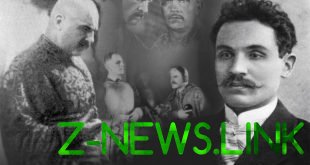 And in the Soviet Union were able to relax.
And in the Soviet Union were able to relax.
Many of you who found the USSR in a more or less conscious age, have been to discos in the late Union, it was a popular place for “range” fazovoi clothes and in General for youth parties; I personally know a few couples who met on Soviet disco.
First, a little history. Dance floor as a place of leisure has existed almost from the first years of the Soviet Union, but they differed from, actually, “late” discos. In 40-50-60 years at dances is often played live music and the atmosphere was a bit reminiscent of pre – revolutionary day, men and women met separately, the dances had names and were often in a certain order, the evening was often an entertainer. Also met the “flat” versions of the dances, when people would ask each other “dance to the gramophone”.
Performed such dances in the houses of culture, clubs, and summer – in parks under the open sky. I have preserved copies of the 1940-ies, where in the section “announcements” I met this (spelling preserved): “Today in the club of submariners will be held tanzevalniy night.” Specialized platforms and clubs for dancing in those days did not exist.
Photo “tantsevalnogo evening” of those years:

Closer to the seventies at the dance began to speak of different ensembles, often copying “Western” pop. With ensembles were generally interesting story – the youth was the need for new music, but at the same time Western ensembles were forbidden (often on spurious ideological reasons), and therefore in the Soviet Union there was a so-called “VIA” which retained all the outward trappings and partly musical rhythms of Western pop, but the lyrics were ideologically correct, or just neutral.
In the photo – classic VIA the 1970-ies: long hair “under Beatles”, flared trousers, trendy turn-down collars. Musical instruments – a separate issue. These signature instruments, like Fender or Gibson in the USSR practically did not exist (they were available only to “the celestials” from this country, and purchased for the currency), so parochial VIA often treated with something simple, like Iolana Czechoslovak or East German Musima, or at least the end of the USSR-ovsky guitars, called music “spades”, “oars” and “firewood.”
In the photo is just such aksamlari, bass – four-stringed bass of the Bulgarian “Golden Orpheus”, the lead singer of the famous Sverdlovsk “Ural-650”, the second guitarist in the background – I think Leningrad 12-string proakustik.
Played on this all songs in the style of “I saw you in the cornflower, we loved each other and went to the construction team”. However, most of the music was written by composers professionalnymi, so a strong disgust they did not cause, and the words on togasa equipment not really auditioned.
Performed VIA both on dance floors and restaurants.

Actually that could be called “disco”, began to appear somewhere in the early to mid-1980s; some sources report that the first Soviet disco appeared in Latvia. It is quite similar to the truth, as all sorts of fashion trends in the USSR often came first in the frontier town/Republic.
The main difference disco from “dancing” in that instead of a live ensemble played music for the composition and order of which were answered by the DJ (or, as they said, “disc jockey”), often with an assistant. The disc jockey was placed, as a rule, a separate table (if disco was held for example in a restaurant) or on any podium or stage. Records were included with the plates or spools, and later, with cassettes. If the technique was “film”, then a disc jockey was, as a rule, two tape while the first tape recorder was playing music, the disk jockey was preparing for the second new song, rewinding the tape to the right moment.
Especially advanced disc jockeys used sound engineering consoles (like “electronics” of PM) is the equipment connected via the remote, can be output as General speakers for the room, and a separate headphone (the channel on the remote was signed as “stereorelease”). Plus with the remote recording can be put one after the other almost without pause, using the faders adjust the volume – it was very comfortable.
Here is what it looked like the workplace of a disc jockey in the 1980s:

And here is a very cool photograph of the workplace a well-wrapped disc jockey. On the table you can see two reel to reel tape recorder (probably something like “Saturn”, “Aster” or “Lighthouse”), on the table right – two cassette radio, something like “Wilma-102 stereo” – as they were then called “tape recorder console”. What is in the suitcase body on the chair I don’t know, but I assume this is the remote control light – that’s the most hung post lights)
And also pay attention to the sloping of the monitor’s speakers (and much of the two types, near and far field) – they are necessary in order for the disc jockey hear what’s playing in the hall. In addition to monitors are headphones (those “stereorelease”), they are worn on the neck, a disc jockey.

And this is the working space of a DJ easier – apparently, it’s some disco Institute.

What is the music played in discos? They were mostly Western ensembles interspersed with Soviet music, like Pugachova or Valery Leontiev. With the beginning of Perestroika, approximately since 1985, the censorship in the music business waned, and the music at the disco was almost completely consist of “rhythms of foreign music”, popular were groups such as ABBA, Modern Talking, CC Catch, Boney M. In the last years of the Soviet Union was also popular Synthpop-bands like Depeche Mode, Pet Shop Boys, Erasure.
The music program is built usually so 4-5 fast dance tracks, then one “slow song”, during which it was possible to invite any during the fast dances the girl, then again a quick composition. Virtually mandatory were “white dance”, during which girls invited boys.

Slow dance at the school disco 1980s:

As usual dressed to the disco? Of course, both the boys and girls tried to show their best, so put all the best that was in the closet. If disco were organized through the Komsomol, it was not welcomed long hair guys, trendy Western clothing and generally “hippie” look. However, by the beginning of perestroika all these restrictions, if not disappeared altogether, is much less prevalent.
In General, in the 1970s, gathered at the dancing dandies looked something like this. There is also a frame with the “dress code”, declared some mysterious “administration.”

Towards the end of the eighties the visitors of discos began to dress something like that) Here and fashionable “Varsova” clothing (often the wrong size), and Velcro shoes, and perms, and garish makeup. Now it looks a little funny, but in those days these girls have guys all already smoked.

Currently disco as a separate kind of holiday is almost gone, a dance party was held at a professional music clubs, with the appropriate equipment and program. “Tancevalnye nights” can be found in small provincial towns, and now it looks something like this:

© 2017, paradox. All rights reserved.





